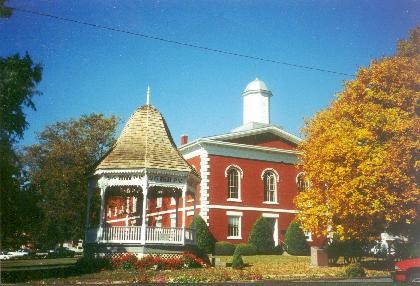748.9 Legal Aspects of Hydraulic Design
Contents
748.9.1 Overview
An understanding of drainage law is essential to the responsible design of highway drainage facilities. In general, the following statements can be made about the legal aspects of hydraulic design:
- Natural drainage should be perpetuated as far as possible.
- Infliction of damage that could reasonably have been avoided is looked upon with disfavor by courts.
- Drainage law standards are becoming more flexible and depending more on the circumstances of each particular case. The designer is advised to consult with the Chief Counsel's Office on any matters involving potential legal liability or litigation.
748.9.2 Federal Laws
The State is required to comply with all Federal Laws. The Code of Federal Regulations (CFR) includes all regulations in force at time of publication. The following federal laws significantly affect highway drainage design:
- National Environmental Policy Act of 1969 (NEPA) (42 USC 4321-4347) (23 CFR 771)
- National Flood Insurance Program (44 CFR 59-77)
- Navigable Waters (Section 404 Permits, Section 401 Water Quality Certification, etc.) (33 USC 1344)
- Fish and Wildlife regulations (endangered species, etc.)
748.9.3 State Laws
748.9.3.1 Reasonable Use Rule
State law regarding surface waters and flood waters generally follows the Reasonable Use Rule, stated as follows:
- Possessor is privileged to make reasonable use of his land even though alteration of flow of surface waters causes harm to others. Liability is incurred only when interference with flow of surface waters is deemed unreasonable.
- The definition of reasonable is unclear, and will vary on a case by case basis. However, the test for reasonableness should consider such items as the amount of harm caused, the foreseeability of harm and the purpose or motive of altering surface flows.
748.9.3.2 Stream Water Rules
In addition to the reasonable use rule, interference with the flow of a natural watercourse causing damage to another party or diversion of flow from one watercourse to another will generally result in liability.
748.9.3.3 Eminent Domain/Inverse Condemnation
A structure that impacts either surface waters or stream waters is likely to result in liability to the adversely affected landowner. If the right to do so is not acquired by deed or condemnation, the landowner may institute an inverse condemnation suit, which, if successful, will result in award of damages and attorney's fees.
748.9.4 Local Laws
Generally, the State is not required to comply with local ordinances, except where compliance is required by State statute. The State may choose to comply as a matter of courtesy if no burden is imposed on the State.
748.9.5 Common Drainage Complaints
See Evaluation of Project Impacts - Common Drainage Complaints.
748.9.6 Significant Court Decisions
Hines Implement - Court decision imposes liability for upstream water damage caused by diverting surface water if use is deemed unreasonable. Reasonableness is determined on a case by case basis. This case represents the first use of the Reasonable Use Rule in a decision involving MoDOT.
The department can be held liable for downstream impacts. This has not been affected by the Hines Implement case.
748.9.7 Negligence and Liability
No hydraulic design is without risk, and some degree of risk must be accepted in the final design. However, damages that were not anticipated in the design may be viewed as due to negligence. It is appropriate to have foreseen the possibility of damage, weighed it against other factors, and accepted that risk as a proper exercise of discretionary judgment. Use of sound engineering judgment, accepted design procedures and sufficient documentation is essential, and provides a defense against liability due to negligence.
In theory, an engineer may be held personally liable for negligent design; however such suits have never been filed to date against a MoDOT engineer. If a suit is filed and the engineer cooperates with the CCO, the engineer will be provided a complete defense and MHTC will pay any damages awarded.
748.9.8 Levee Attachments
Information concerning levees on MHTC right of way and roadway embankments versus levees is located in EPG 203.2.5 Levee Attachments.
